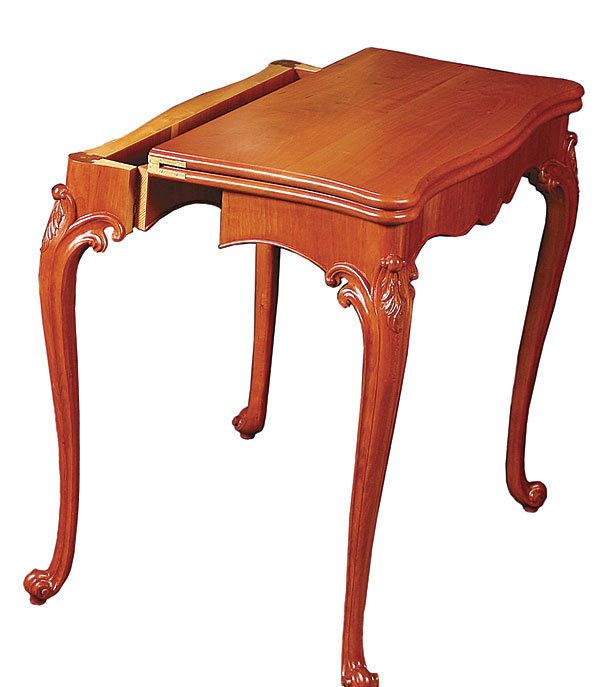Expanding Table Looks Great Open or Closed
Hinged side rails are the secret to this design.

Synopsis: This table expands and contracts with no compromise in appearance, strength, or utility. Greg Brown first tried the mechanics on a Chippendale design, but realized it can be used on small tables of any style, and the accordion-style mechanism gets even simpler when you don’t have to contend with fancy cabriole legs. The top folds in two on card-table hinges, while an internal panel slides forward in grooves to lock the side aprons open when they are unfolded. The sides pivot on butt hinges and modified knife hinges.
The problem with most expanding card tables is that they either look good when open or when closed, but rarely both, and sometimes neither. If the legs are symmetrical in one position, they usually aren’t in the other, and in either position they may get in the way of the user or not provide optimum support.
I recently made a card table designed by Thomas Chippendale whose base expands and contracts with no compromise in appearance, strength, or utility. What’s more, the mechanics can be used on almost any small table design. Whether you are looking for a traditional card table or a contemporary table for a small kitchen, you can adapt it to multiple uses, with no compromise of form or function.
Anatomy is simpler on standard tables
This ingenious accordian mechanism gets even simpler when you don’t have to contend with fancy legs like those on Brown’s Chippendale-style table. For a standard table base, the folding sections can be hinged directly into the legs, offering a more seamless look. In either case, the overall length of the expandable table sides shouldn’t be much more than 36 in., or you risk overloading the hinges. The fixed sides can be as long as you like.
Full-Size Top View Is Critical
The dimensions below are for a typical square table, close to the author’s in size. If you need a different size or shape, be sure to make full-size drawings. Do the math to determine the length of the folding sections, or create mockups using the hinges. The key is that the overall length of the base, including the legs, is exactly half when it is in the closed postion. That will keep your tabletop overhang consistent.
From Fine Woodworking #233
For the full article, download the PDF below:
















Log in or create an account to post a comment.
Sign up Log in